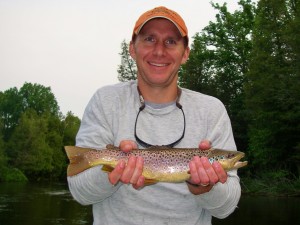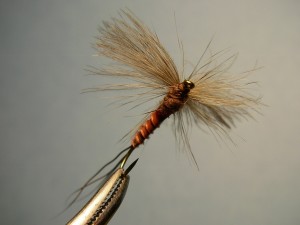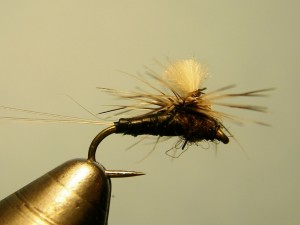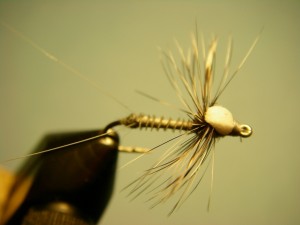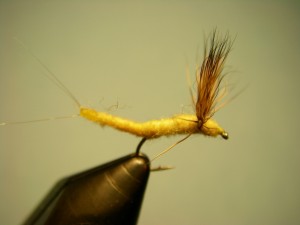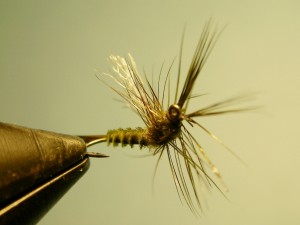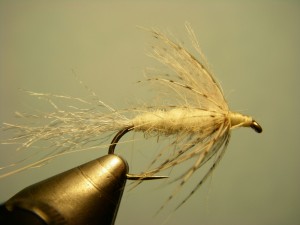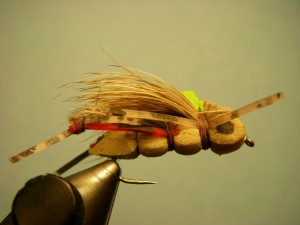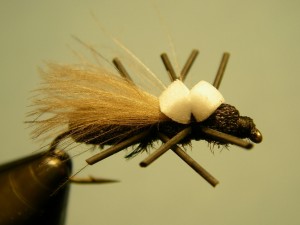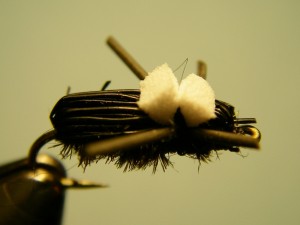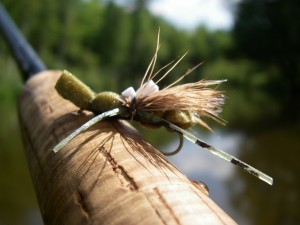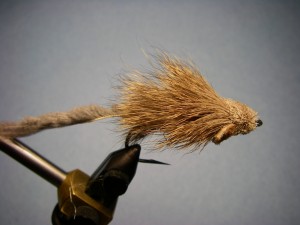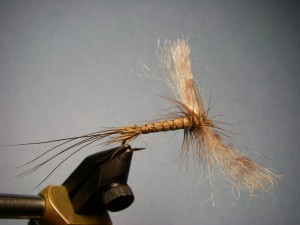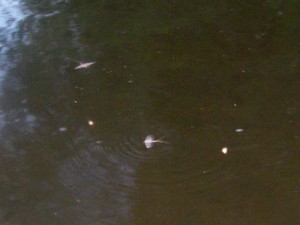Our cooler summer is keeping water temperatures nice and cool and the fish sassy. Ranging from the upper 50s to low 60s and with a good flow, the upper Manistee and Boardman look a little different for this time of year.
Mid-morning hatches of Tricos have been taking place but vary a little based on how long it takes for the air to warm up; some mornings it takes a little longer for those small bugs to hit the water and the fish to look up. There aren’t many other bugs on the water right now except for a light hodge-podge of mayflies – including Cahills, BWOs and Isonychias. More on <<Fishing After the Hex Hatch>>
With fewer bugs on the water and hatch to match, now is a good time to transition into the terrestrial fishing – that is hoppers, ants, beetles, cicadas and most patterns tied with foam and rubber legs. As the summer extends these land-loving bugs find themselves on the water and vulnerable to trout. Fish them dead-drift with the occasional twitch and if that doesn’t work, put a lot of twitch and motion in them (not necessarily drag) for some reaction. More on <<Terrestrial Fishing>>
Small streamers, too, are working when the surface activity isn’t taking place. Work the structure with weighted patterns on a floating line and see if you can’t tease some fish out of their bunkers.
The lake fishing remains good for largemouth bass and bluegill fishing. The bigger poppers and sliders have been fooling the larger bass where the small spiders, swimming nymphs and streamers are working for the bluegill/panfish. Weed growth and lily pads have been a great place to start as is structure near breaks in water depth. More on <<Largemouth Bass Fishing>>
Smallmouth fishing in the lower Manistee remains an option for those looking to fish streamers for these fun fish. While they aren’t as big as the fish in the Bay, these bass keep it visual and are often eager to please. This is not the ideal species for the beginner but for the angler who has the basic skills and looking for a fun way to further develop your skills.
Good luck.
Ted
Tricos and Terrestrials for Trout – July and August fly fishing for trout on the Upper Manistee River
Salmon– Fresh fish can enter rivers as early as mid-August and offer great fishing through September.
Fall Steelhead– From the end of September through November – this is the time of year for Steelhead.

